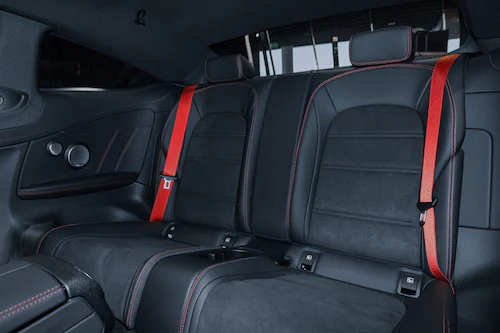Introduction
As the global community awakens to the pressing need for sustainable development and environmental conservation, innovative solutions are sought to pave the way for a greener future. In this pursuit, marsh buggies have emerged as a promising asset in the battle against climate change and habitat degradation. These remarkable amphibious machines, designed to traverse marshlands, wetlands, and other ecologically sensitive areas, offer a unique blend of versatility, efficiency, and eco-friendliness, empowering industries and conservationists alike to tread lightly upon the Earth.
With their low ground pressure and specially designed tracks, marsh buggies provide access to remote and delicate ecosystems without causing significant damage to the natural habitat. From ecological restoration and wetland conservation to construction projects and resource exploration, these buggies offer an unparalleled advantage in minimizing environmental impact while accomplishing critical tasks. As we delve into the world of marsh buggies, it becomes evident that their integration into various sectors holds the potential to foster a harmonious coexistence between human endeavors and the preservation of our planet’s invaluable biodiversity.
Eco-Friendly Applications of Marsh Buggies
The versatile nature of marsh buggies lends itself to a myriad of eco-friendly applications, showcasing their potential as a driving force in building a greener future. One of their most significant contributions lies in environmental restoration projects. With their ability to access hard-to-reach wetlands and marshes, these buggies become invaluable allies in efforts to rehabilitate degraded ecosystems. From removing invasive species and planting native vegetation to restoring eroded shorelines, marsh buggies facilitate the revival of delicate habitats with minimal disturbance, fostering biodiversity and ecological balance.
Moreover, marsh buggies play a pivotal role in sustainable infrastructure development. Whether constructing pipelines, power transmission lines, or other essential facilities, these machines offer an eco-conscious alternative to traditional heavy machinery. By minimizing soil compaction and habitat disruption, they protect vital ecosystems, ensuring that human progress goes hand in hand with environmental stewardship. As we continue to explore and harness the eco-friendly potential of marsh buggies, we inch closer to a future where conservation and progress thrive in harmony, safeguarding our planet for generations to come.
Reducing Environmental Impact with Marsh Buggies
Marsh buggies are instrumental in significantly reducing environmental impact across various industries and activities. In sectors like construction and resource exploration, marsh buggies excel in traversing soft and sensitive terrains with their low ground pressure, thereby minimizing soil compaction and preserving fragile ecosystems. By employing these specialized machines, developers can execute projects while leaving a smaller footprint, respecting the surrounding natural environment.
Another notable aspect of reducing environmental impact with marsh buggies is their ability to limit habitat disturbance during crucial endeavors such as oil and gas drilling. With their amphibious capabilities, marsh buggies provide access to remote locations without the need for extensive infrastructure development, like building roads or clearing vegetation. Consequently, this eco-friendly approach mitigates the destruction of vital habitats and reduces the overall ecological footprint of resource extraction activities. As marsh buggies continue to demonstrate their potential for promoting sustainability, their incorporation into various industries is becoming a significant stride towards a greener, more harmonious coexistence between human endeavors and the planet’s precious ecosystems.
Preserving Wetlands and Wildlife Habitats
Preserving wetlands and wildlife habitats is a paramount challenge in the quest for a greener future, and marsh buggies are proving to be invaluable allies in this endeavor. These specialized machines offer a delicate touch when accessing and navigating through ecologically sensitive areas, minimizing disturbance to wetland ecosystems. By treading lightly and distributing weight evenly, marsh buggies protect the delicate balance of these habitats, ensuring that vital breeding grounds and shelter for countless species remain intact.
In addition to their gentle impact on the environment, marsh buggies play a pivotal role in habitat restoration and conservation efforts. They are crucial tools in removing invasive species, restoring native vegetation, and repairing damaged shorelines. With their ability to access remote and inaccessible regions, marsh buggies facilitate the implementation of vital restoration projects, rejuvenating wetland areas and bolstering biodiversity. As guardians of these invaluable ecosystems, marsh buggies contribute significantly to the preservation of wildlife habitats, ultimately safeguarding the future of numerous plant and animal species that depend on these vital environments for their survival.
Enhancing Sustainable Construction Practices
In the realm of sustainable construction practices, marsh buggies have emerged as game-changers, offering a host of benefits that significantly enhance environmental stewardship. These versatile machines are adept at navigating challenging terrains, including wetlands and marshes, without causing soil compaction or disrupting delicate ecosystems. By minimizing their ecological footprint, construction projects can be completed with greater consideration for the surrounding environment, mitigating habitat destruction and preserving natural biodiversity.
Furthermore, Marsh Buggy contribute to sustainable construction by reducing the need for costly and environmentally impactful infrastructure development. With their ability to access remote areas directly, without the necessity of building access roads or clearing vegetation, marsh buggies streamline construction processes while conserving natural resources. As these eco-friendly machines gain traction in the construction industry, they pave the way for greener building practices, aligning human development with environmental preservation to create a more sustainable and responsible future.
The Role of Marsh Buggies in Erosion Control
Marsh buggies play a crucial role in erosion control, particularly in coastal and wetland regions where erosion poses significant threats to the surrounding environment. With their specialized design and low ground pressure, these machines can access eroding shorelines without exacerbating the issue. Marsh buggies are employed in various erosion control methods, such as installing erosion control mats, planting vegetation, and constructing geotextile structures. By stabilizing the soil and preventing further degradation, marsh buggies actively contribute to preserving the integrity of delicate coastal ecosystems.
Moreover, marsh buggies facilitate swift and efficient erosion control projects in remote or challenging terrains that would otherwise be inaccessible by conventional methods. Their amphibious nature allows them to traverse soft and unstable surfaces with ease, enabling erosion control efforts in areas where human access is otherwise limited. By bolstering erosion control initiatives, marsh buggies become indispensable allies in safeguarding coastlines and wetlands, fortifying these critical ecosystems against the adverse effects of erosion and ensuring their long-term resilience.
Conclusion
By incorporating marsh buggies into various industries and environmental initiatives, we can take significant strides towards harmonious coexistence with the natural world. These versatile machines not only empower us to achieve critical tasks with reduced ecological footprints but also contribute to the preservation of biodiversity and the protection of invaluable ecosystems. As we continue to harness the potential of marsh buggies, we embark on a journey towards a greener, more sustainable future, where human progress and environmental stewardship go hand in hand, securing a thriving planet for generations to come.





